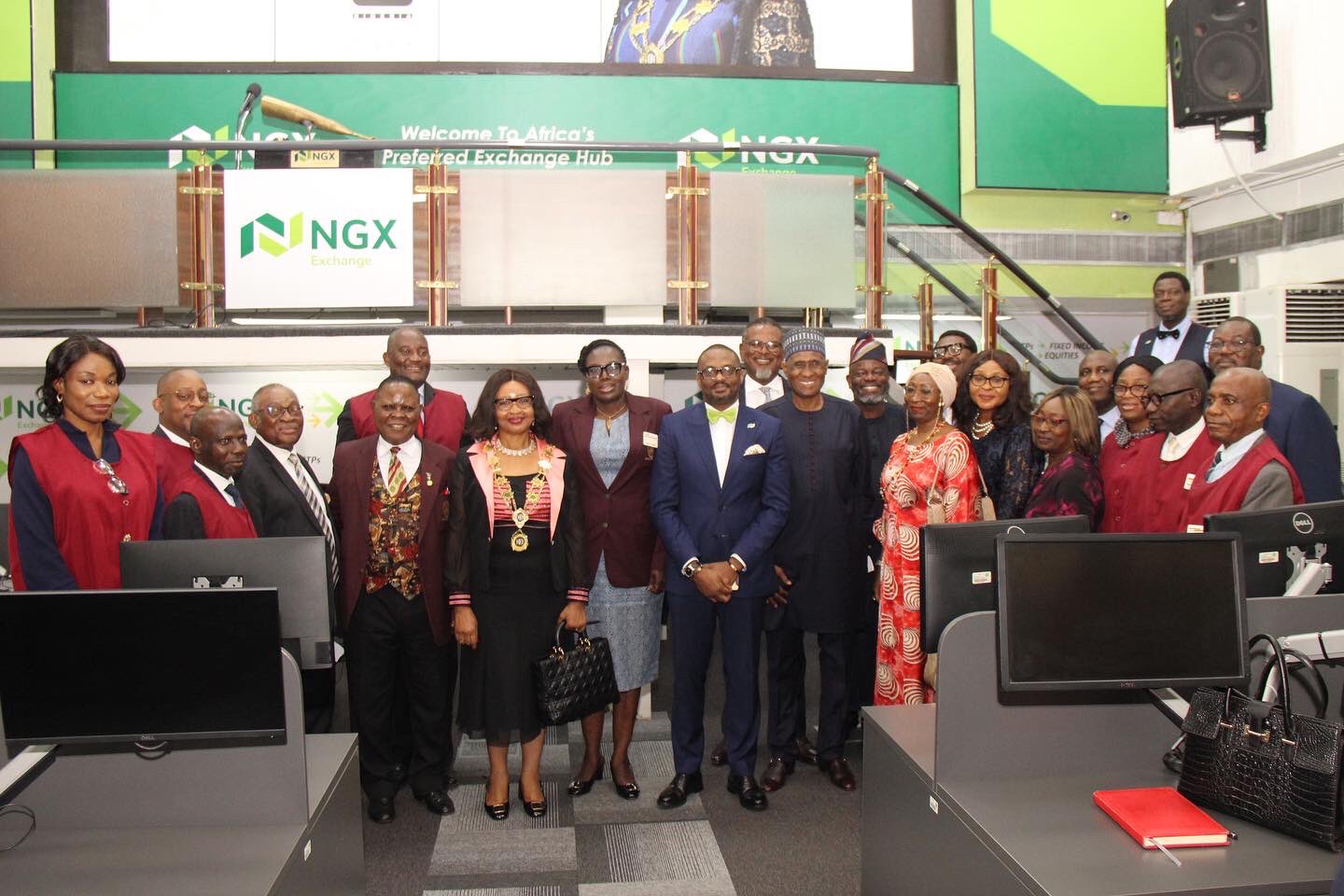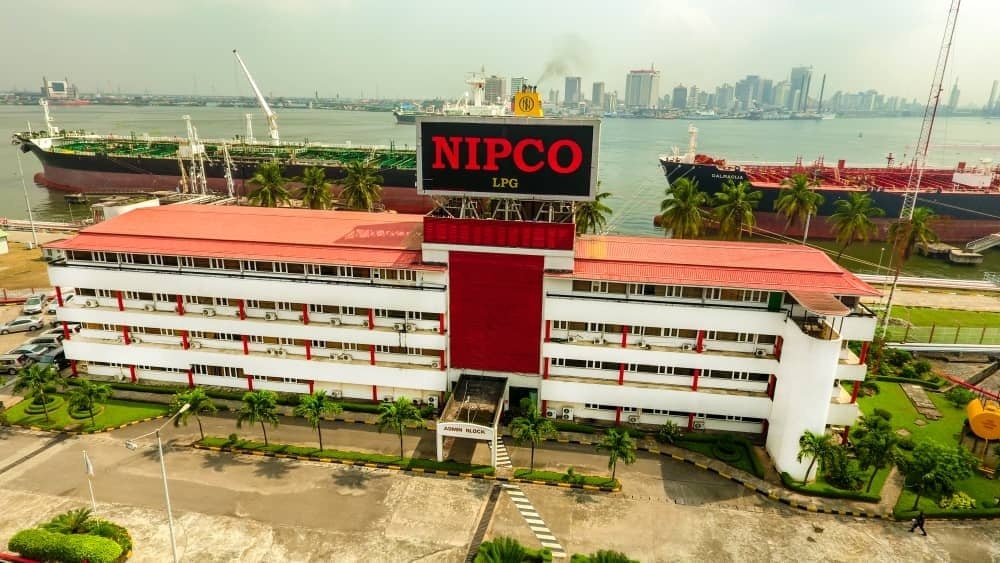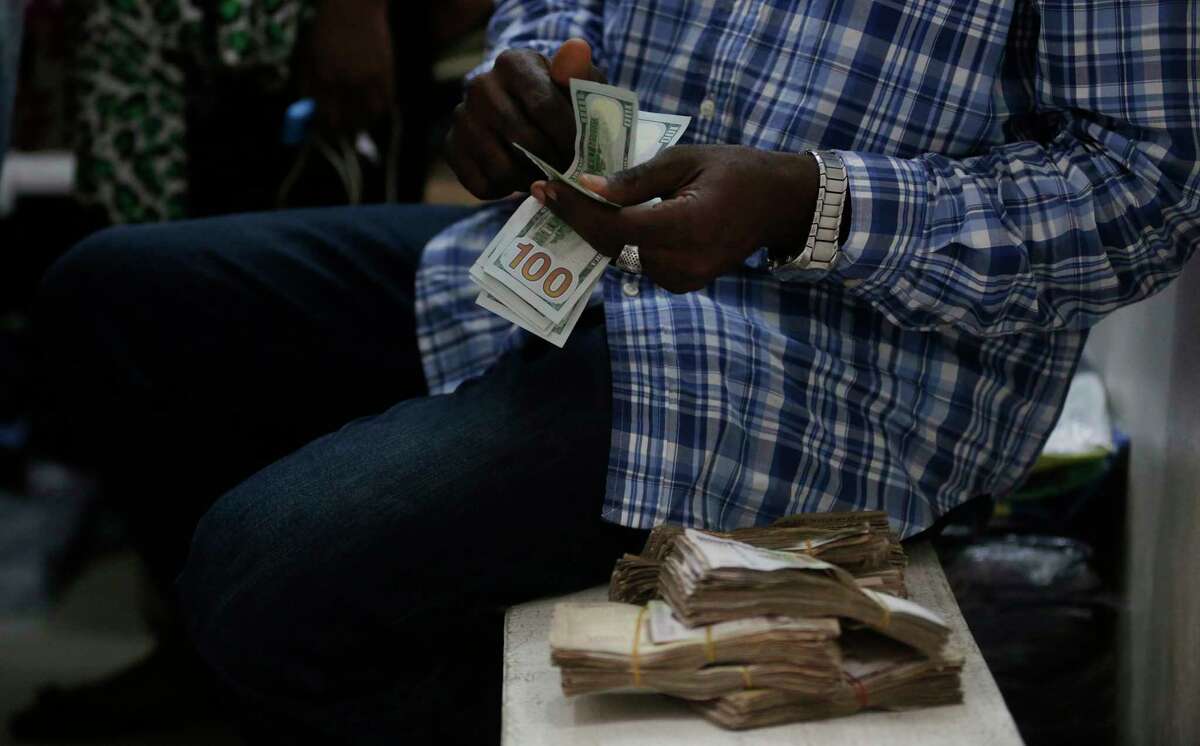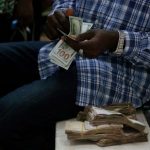Economy
What is Behind South Africa’s and Namibia’s Capital Market Developments?

When diamonds and gold were found in South Africa in the late 1800s, the economy was transformed. Following that, a large amount of global money was invested.
The nation has grown a well-developed industrial base in the years after World War II, and it has undergone extremely volatile growth rates, including several years when it was among the highest in the world.
South Africa, on the other hand, has had persistent economic difficulties since the late 1970s, owing to its apartheid policies, which caused many countries to suspend foreign investment and enforce more harsh trade restrictions against it.
Namibia has been classified as a lower-middle-income country with a per capita gross domestic product (GDP) that is slightly higher than the average for Sub-Saharan African countries.
However, the summary is deceptive. Only one-quarter of all Namibians and one-sixth of black Namibians have decent incomes; up to two-thirds of the population lives in abject poverty with inadequate access to public services. Because of a declining productive industry, a shortage of capital stock and serious world market problems for base metals and uranium oxide, economic development remains a challenge.
Furthermore, unless foreign assistance investments quickly turn into significant real inflows and private external investment in mining, manufacturing, and fisheries occurs, the one segment of the GDP that expanded steadily in the 1980s would decrease.
South Africa
The South African Reserve Bank, which is the sole issuing authority for the rand, the national currency, has a well-developed financial structure. It is in charge of monetary policy formulation and implementation, as well as managing foreign exchange trades.
There are several licensed banking institutions, many of which focus on commercial banking, as well as merchant, deposit, and investment banking, to name a few.
The Development Bank of Southern Africa, for example, is a quasi-governmental organization that promotes development programs. The banking market is dominated by private pension and provident funds, as well as more than two dozen insurance providers. The Johannesburg Stock Exchange is the centre of an active capital market.
South Africa, Africa’s second-largest economy after Nigeria, has a GDP that is far greater than that of its sub-Saharan neighbours. The Johannesburg Stock Exchange (JSE), which is 132 years old and has a market capitalization of more than USD1 trillion, is the biggest stock exchange in Africa.
The JSE is a comprehensive and cutting-edge exchange that offers complete electronic trading, clearing, and settlement of stocks, shares, and interest-rate securities, as well as financial, asset, and currency trading in South Africa.
On the JSE, there are approximately 350 companies listed, with industrials being the largest grouping, led by energy companies such as mines and oil companies.
The JSE, on the other hand, is facing strong headwinds. After decades with little competition, the JSE is now being tested by smaller competitors such as ZAR X, a low-cost model launched in 2016 to offer stock access to lower-income individuals.
Since then, new entrants have entered the ring, including A2X, 4AX, and the Equity Express Securities Exchange, which focuses on black economic empowerment. The market is currently focused on the newly implemented ‘twin peaks’ regulatory model, which response to weak financial sector policies and insufficient regulatory supervision.
It is intended to promote consumer trust and stimulate capital formation, much as it was in Australia, where the concept first debuted.
Namibia Profile
The majority of banking activity is handled by two commercial banks, First National Bank of Southern Africa and Standard Bank Namibia (both branches of South African parent companies). Following independence, land, infrastructure, and development banks were reorganized. In the mid-1990s, the Central Bank of Namibia introduced the Namibian dollar as an independent currency to replace the South African rand.
The Namibian Stock Exchange (NSX) currently has 50 listed companies. Namibia has the second-lowest population density of any sovereign nation, with just 2.6 million people.
The NSX was established in 1904 to help finance the country’s diamond rush. The rush was over by 1910, and the exchange was suddenly closed. The NSX did not reopen until 1992, 82 years later, with start-up funding from 36 Namibian companies.
Despite the fact that agriculture and tourism are important parts of the economy, other industries dominate the stock exchange. In reality, three industries account for half of the NSX’s listings: banking (four companies), mining (seven companies), and finance (three companies).
It is only recently that debt has been issued and listed. Namibia had virtually no public debt until 2011. In reality, the nation had one of the lowest debt-to-GDP ratios in the world, at just 16 per cent of GDP. International rating agencies downgraded the country to a sub-investment rating in 2017 due to the dramatic increase in public debt.
Namibian state-owned corporations and private businesses have floated bonds worth more than NAD33 billion (approximately £1.73 billion) on the NSX. As traditional financing sources dry up, more Namibian firms are expected to issue bonds in the immediate future. Because of the economic crisis, banks’ balance sheets and loan-to-deposit ratios have been strained, and they are less likely to lend to corporations.
The withdrawal of traditional finance provides an incentive for small businesses to raise money from their balance sheets, collateralized or government-guaranteed debt securities, or stock offerings on the local exchange.
The Report
From a small lunch party in New York City in 1937 to a vast array of 170,000 members and 157 societies in 2019, the Investment Club has grown to become the world’s largest investment organization, dedicated to leading the investment profession internationally for the ultimate good of society.
Early colonial times saw the establishment of several African exchanges. After the diamond and gold rush, South Africa led the way, followed by Zimbabwe, Egypt, and Namibia (at the time, a German colony) – all before 1905. Some businesses did not survive the commodity boom, but most are flourishing despite being significantly diversified and modernized.
Nigeria in the 1960s; Botswana, Mauritius, and Ghana in 1989; Namibia after its independence from South Africa in the 1990s.
Others, especially the East African exchanges, are relatively recent and are rapidly growing in popularity. All of these examples show how regulation, trading technologies, and fintech are allowing more market players to participate in finance and investing in a fairer, quicker, and lower-cost manner.
The African Securities Exchanges Association collaborated on the CFA Institute Research Foundation brief (ASEA).
Economy
Customs Street Chalks up 1.08% on Renewed Buying Pressure

By Dipo Olowookere
A 1.08 per cent growth was further printed by the Nigerian Exchange (NGX) Limited on Friday on improved appetite for Nigerian stocks.
Data showed that the insurance sector lost 0.61 per cent yesterday due to profit-taking as the energy space gave up 0.08 per cent, while the commodity counter closed flat.
However, the industrial goods landscape appreciated by 2.06 per cent, the banking index improved by 1.31 per cent, and the consumer goods sector expanded by 0.83 per cent.
At the close of business on Customs Street, the All-Share Index (ASI) increased by 1,563.92 points to 147,040.07 points from 145,476.15 points and the market capitalisation went up by N996 billion to N93.722 trillion from N92.726 trillion.
UAC Nigeria led the advancers’ log yesterday after it grew by 10.00 per cent to N96.80, Transcorp Hotels jumped by 9.71 per cent to N172.80, Royal Exchange appreciated by 8.89 per cent to N1.96, Ikeja Hotel soared by 8.74 per cent to N31.10, and Veritas Kapital leapt by 8.07 per cent to N1.74.
On the flip side, Union Dicon declined by 10.00 per cent to N6.30, ABC Transport slipped by 9.88 per cent to N3.10, AXA Mansard depreciated by 7.19 per cent to N12.90, FTN Cocoa lost 4.62 per cent to trade at N4.75, and Guinea Insurance dropped 3.36 per cent to finish at N1.15.
A total of 38 stocks ended on the gainers’ table and 17 stocks finished on the losers’ table, representing a positive market breadth index and strong investor sentiment.
Traders transacted 361.6 million equities for N14.8 billion in 21,051 deals yesterday versus the 1.9 billion equities worth N19.2 billion traded in 23,369 deals a day earlier, showing a decline in the trading volume, value, and number of deals by 80.97 per cent, 22.92 per cent, and 14.20 per cent, respectively.
The busiest stock for the session was Zenith Bank with 59.5 million units worth N3.6 billion, Access Holdings traded 46.1 million units valued at N973.0 million, Fidelity Bank exchanged 29.4 million units for N560.4 million, FCMB transacted 27.9 million units worth N293.9 million, and Tantalizers sold 13.0 million units valued at N29.8 million.
Economy
Nipco, 11 Plc Crash OTC Securities Exchange by 4.76%

By Adedapo Adesanya
Energy stocks influenced the 4.76 per cent loss recorded by the NASD Over-the-Counter (OTC) Securities Exchange on Friday, December 5.
The culprits were the duo of 11 Plc and Nipco Plc,with the former shedding N32.17 to end at N291.83 per share compared with the previous day’s N324.00 per share, and the latter down by N21.00 to sell at N195.00 per unit versus the previous session’s N216.00 per unit.
Consequently, the NASD Unlisted Security Index (NSI) slumped by 170.16 points to 3,401.37 points from 3,571.53 points and the market capitalisation lost N101.81 billion to close at N2.035 billion from the N2.136 trillion quoted in the preceding session.
The OTC securities exchange suffered the decline yesterday despite the share prices of three companies closing green.
Central Securities Clearing System (CSCS) Plc was up by N1.80 to close at N39.80 per share compared with Thursday’s price of N38.00 per share, Air Liquide Plc appreciated by N1.09 to N11.99 per unit from N10.90 per unit, and FrieslandCampina Wamco Nigeria Plc grew by 78 Kobo to N56.57 per share from N55.79 per share.
During the session, the volume of transactions rose by 6,885.3 per cent to 18.2 million units from 4.3 million units, the value of transactions ballooned by 10,301.7 per cent to N389.7 million from N347.2 million, but the number of deals declined by 29.7 per cent to 26 deals from 37 deals.
Infrastructure Credit Guarantee Company (InfraCredit) Plc ended the day as the most traded stock by value on a year-to-date basis with 5.8 billion units worth N16.4 billion, followed by Okitipupa Plc with 170.4 million units valued at N8.0 billion, and Air Liquide Plc with 507.5 million units worth N4.2 billion.
InfraCredit Plc also finished the day as the most traded stock by volume on a year-to-date basis with 5.8 billion units transacted for N16.4 billion, followed by Industrial and General Insurance (IGI) Plc with 1.2 billion units sold for N420.2 million, and Impresit Bakolori Plc with 536.9 million units worth N524.9 million.
Economy
Naira Depreciates to N1,450/$1 at Official Forex Market

By Adedapo Adesanya
The Naira depreciated further against the US Dollar in the Nigerian Autonomous Foreign Exchange Market (NAFEX) on Friday, December 5, as FX demand pressure mounts.
The Nigerian currency lost N2.60 or 0.18 per cent against the greenback to close at N1,450.43/$1 compared with the previous day’s N1,447.83/$1.
Equally, the domestic currency declined against the Pound Sterling in the official forex market during the session by N4.48 to trade at N1,935.45/£1, in contrast to Thursday’s closing price of N1,930.97/£1 and shrank against the Euro by 43 Kobo to end at N1,689.17/€1 versus the preceding session’s rate of N1,688.74/€1.
Similarly, the local currency performed badly against the US Dollar at the GTBank FX counter by N2 to close at N1,455/$1 versus Thursday’s N1,453/$1 but traded flat at the parallel market at N14.65/$1.
As the country gets into the festive period, pressure mounted on the local currency reflecting higher foreign payments and lower FX inflows.
However, there are expectations that the Nigerian currency will be stable, supported by interventions by to the Central Bank of Nigeria (CBN) in the face of steady dollar Demand and inflows from Detty December festivities that will give the Naira a boost after it depreciated mildly last month.
Traders cited by Reuters expect that the Naira will trade within a band of N1,443-N1,450/$1 next week, buoyed by improved FX interventions by the apex bank.
As for the crypto market, it was down yesterday due to profit-taking associated with year-end trading. However, the December 1-Year Consumer Inflation Expectation by the University of Michigan fell to 4.1 per cent from 4.5 per cent previously and 4.5 per cent expected. The 5-Year Consumer Inflation Expectation fell to 3.2 per cent from 3.4 per cent previously and 3.4 per cent expected.
With the dearth of official economic data of late, these private surveys have taken on a new level of significance and the market banks of them to make decisions.
Cardano (ADA) depreciated by 5.7 per cent to $0.4142, Dogecoin (DOGE) slid by 5.1 per cent to $0.1394, Ethereum (ETH) dropped by 3.9 per cent to $3,039.75, Solana (SOL) declined by 3.8 per cent to $133.24, and Litecoin (LTC) fell by 3.7 per cent to $80.59.
Further, Bitcoin (BTC) went down by 2.6 per cent to sell at $89,683.72, Binance Coin (BNB) slumped by 2.2 per cent to $883.59, and Ripple (XRP) shrank by 2.1 per cent to $2.04, while the US Dollar Tether (USDT) and the US Dollar Coin (USDC) remained unchanged at $1.00 each.
-

 Feature/OPED6 years ago
Feature/OPED6 years agoDavos was Different this year
-
Travel/Tourism9 years ago
Lagos Seals Western Lodge Hotel In Ikorodu
-

 Showbiz3 years ago
Showbiz3 years agoEstranged Lover Releases Videos of Empress Njamah Bathing
-

 Banking7 years ago
Banking7 years agoSort Codes of GTBank Branches in Nigeria
-

 Economy3 years ago
Economy3 years agoSubsidy Removal: CNG at N130 Per Litre Cheaper Than Petrol—IPMAN
-

 Banking3 years ago
Banking3 years agoFirst Bank Announces Planned Downtime
-

 Banking3 years ago
Banking3 years agoSort Codes of UBA Branches in Nigeria
-

 Sports3 years ago
Sports3 years agoHighest Paid Nigerian Footballer – How Much Do Nigerian Footballers Earn











